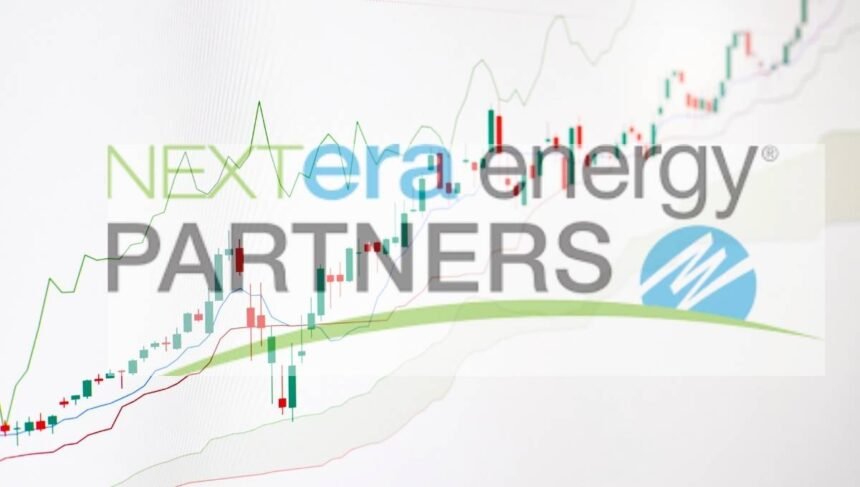NextEra Energy Partners (NEP) stock has taken a beating in 2023, falling over 55% year-to-date. However, for investors with a high risk tolerance, NEP offers tremendous upside potential. Here’s a closer look at why NEP is so undervalued right now and the major risks facing the company.
NEP’s Business Model
NextEra Energy Partners is a subsidiary and financing vehicle for NextEra Energy (NEE), giving it vital support from its strong parent company. NEP focuses on renewable energy, owning one of the largest wind power fleets globally.
Specifically, NEP acquires, manages and owns contracted clean energy projects with stable, long-term cash flows. The company’s portfolio consists of interests in dozens of wind and solar projects across the United States, as well as natural gas infrastructure assets.
This business model provides NEP with highly predictable cash flow via long-term contracts. The average remaining contract life is around 14 years, providing excellent cash flow visibility.
Recent Headwinds
NEP has faced several challenges in 2023 that have put pressure on the stock price.
First, rising interest rates have increased NEP’s capital costs at a time when it needs to invest heavily in new renewable energy projects. This has strained cash flows.
In addition, NEE suspended NEP’s incentive distribution rights (IDR) obligations this year. This gives NEP more financial flexibility but also reduces future cash flow upside.
NEP also slashed its distribution growth targets in half, now projecting 5-8% annual growth through 2026 versus prior guidance of 12-15%. This signals reduced expectations for cash flow growth.
Finally, NEP has debt maturities approaching in 2024-2025 that it must either refinance or repay. This further strains the balance sheet.
Valuation Looks Highly Compelling
Despite these challenges, NEP stock looks extremely undervalued:
- Distribution yield of ~12%, far above historical averages.
- Price/AFFO ratio of just 7.3x, well below prior years.
- EV/EBITDA multiple of 9.81x, a significant discount to peers.
Analysts expect NEP to generate adjusted EBITDA of $2.220 billion to $2.420 billion in 2023-2024. Based on these projections, NEP is priced very cheaply right now for its growth prospects.
Upside Potential with Lower Rates
Looking ahead, NEP could benefit tremendously if interest rates start to decline. Lower rates would ease pressure on cash flows and allow accretive investments in new renewable energy projects once again.
With rates projected to fall in 2024-2025, NEP is well-positioned with its top-tier project backlog and sponsor support from NEE.
Key Risks to Consider
While the valuation looks compelling, risks remain elevated:
- NEP must maintain distribution coverage near 90% to avoid a distribution cut. Tough to do with reduced cash flow visibility.
- Execution risk is high on the large repowering program needed to sustain cash flows. Delays could strain finances further.
- Debt maturities in 2024-2025 must be refinanced and paid off to avoid a credit downgrade. Not guaranteed given tight cash flows.
- Unclear if NEP can negotiate another accretive dropdown from NEE in time to meet obligations. This is critical to the long-term growth outlook.
In essence, NEP has a viable path forward, but it remains laden with risks and uncertainty. Only investors comfortable with the potential downside should consider shares at this point.
Conclusion: Worth the Risk for Some Investors
NEP is not appropriate for conservative income investors right now given the risks and reduced distribution growth outlook. However, for investors with a higher risk tolerance, the upside potential seems tremendous.
If NEP management can successfully navigate the current challenges, today’s valuation leaves substantial upside in the stock price as the renewable energy investment cycle resumes. NEP could potentially double over the next 2-3 years if execution goes smoothly.
While not a risk-free investment by any means, NEP may be worth the risk at today’s undervalued levels for investors who understand the potential downside scenarios. For those with the patience and temperament to hold through likely volatility, NEP stock offers appealing long-term total return potential.
Frequently Ask Questions
What does NextEra Energy Partners do?
NextEra Energy Partners is a subsidiary of NextEra Energy focused on acquiring, managing, and owning renewable energy projects, primarily wind and solar. NEP generates cash flow from long-term contracted projects to support its distributions.
Why has NEP stock declined so much in 2023?
NEP stock is down over 40% year-to-date due to rising interest rates straining its financing needs, reduced distribution growth targets, and upcoming debt maturities that raise credit concerns.
What are the biggest risks for NEP stock?
Key risks are execution risks on the large repowering program, maintaining distribution coverage near 90%, refinancing debt maturities in 2024-2025, and uncertainty whether NEP can complete another accretive dropdown from parent NEE in time.
Is NEP’s distribution safe at current levels?
NEP’s distribution is riskier now given tighter coverage projections of 90%+ and reduced cash flow visibility. There is an elevated risk of a distribution cut if any of the key risks play out negatively.
Why does NEP stock look undervalued?
Despite the risks, NEP trades at a ~12% distribution yield, 7.3x Price/AFFO multiple, and 9.8x EV/EBITDA – all representing significant discounts to historical averages and peer multiples.
Should income investors buy NEP stock now?
Most conservative income investors will want to avoid NEP given the high risk of distribution cuts. However, it may be appealing for higher risk investors comfortable with potential distribution reductions.
Does NEP stock have upside potential?
If management can successfully navigate the current challenges, NEP has substantial upside potential as renewable energy investment cycle resumes, perhaps doubling in 2-3 years. But material risks remain.










